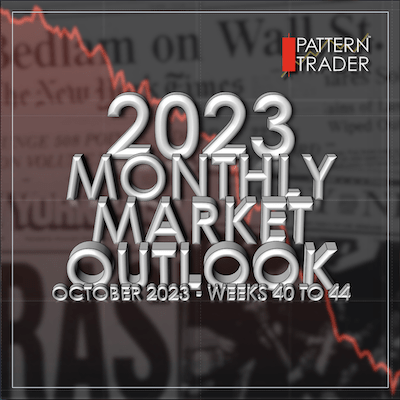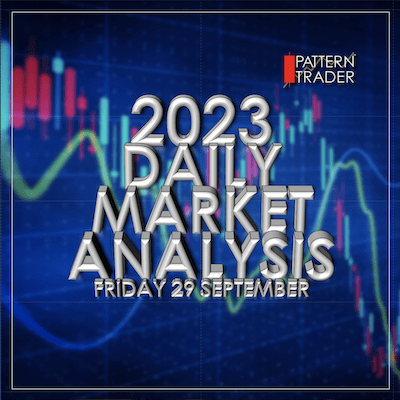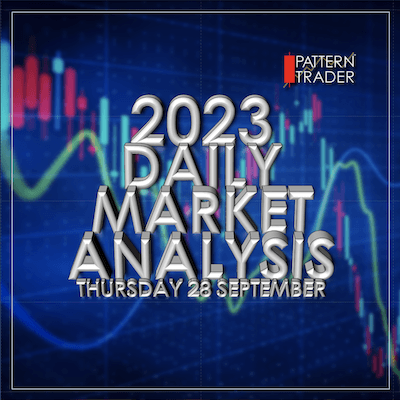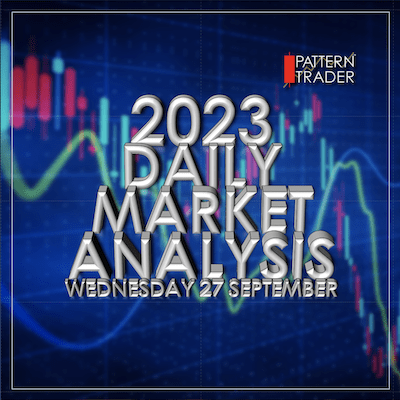Also known as the “Pyramid System of Financial Management”.
“Never add more risk to higher risk.”
The first thing you will say when you read that is, “I know that.” But do you really know? So many people I have met know this but still don’t practice it. In fact, they do exactly the opposite.
In 2008, 60 Billionaires in China were reduced to just 20 in a matter of months. The reason for their demise was a simple lack of risk management married to terrible financial management. They added more risk to their already high risk positions and when things went wrong, it only exacerbated their losses.
“Higher risk” in this case refers to a stock that has already made multiple highs. It looks tempting. It gives you a sense of urgency. It shows you that the next resistance up is going to give you a 30% profit from the current price. But you already hold 1,000 shares of it or maybe you don’t and you want to buy in now.
Doesn’t this look so tempting especially if I told you that this stock can get up to $240 and that it has never missed an earnings call and that analysts have been raving about this since August and that Soros and Paulsen are claiming that this stock is better than AAPL and that Warren Buffet just bought $100M worth of this stock at $80 with a long term view for $280?
Now let’s put you in the trade at $40 at the start of August. As the trade goes up to $60, you would want to buy more especially if you read that Soros and Paulsen love this stock. So as the story goes …
So you buy more as the trade rises. With a budget of 15,000 shares, you start your investment with some reservation but as the trade starts looking better, you increase your position sizing as the trade rises. At the high of $135, your accumulated unrealized profit stands at an amazing $625,000.
- 1,000 Shares X $95 profit = $95,000
- 2,000 Shares X $75 profit = $150,000
- 3,000 Shares X $55 profit = $165,000
- 4,000 Shares X $35 profit = $140,000
- 5,000 Shares X $15 profit = $75,000
Now, that is a lot of money. Congratulations. Let’s hope it doesn’t make a nasty correction.
But it does. It always happens.
Initially, you will wait and see if the $110 support will hold and reverse with the Hammer. But in the next two sessions, things go terribly wrong – the stock slices through the $110 and $100 supports and then makes a nasty drop to an intra-day low of $70.
You can’t stand it anymore and you cut loss. Another possibility is that you get a margin call and your trade is frozen.
Now let’s see what your account looks like …
- 1,000 Shares X $30 = $30,000
- 2,000 Shares X $10 = $20,000
- 3,000 Shares X ($10) = ($30,000)
- 4,000 Shares X ($30) = ($120,000)
- 5,000 Shares X ($50) = ($250,000)
Thus, a cut loss or margin call at $70 (last retracement candle low) will give you a net loss of ($350,000).
Let’s just say, for the sake of argument, that you are a disciplined trader and you cut loss at the $95 resistance or that your broker margin called you at $95 …
Your accounts will look better but you’re still copping a loss …
- 1,000 Shares X $55 = $55,000
- 2,000 Shares X $35 = $70,000
- 3,000 Shares X $15 = $45,000
- 4,000 Shares X ($5) = ($20,000)
- 5,000 Shares X ($25) = ($125,000)
Even a cut loss or margin call at $95 (second-last retracement candle low) will give you a net loss of ($25,000).
This is what happens when you add more risk to a trade that is already risky. Any trade at a historical or 52 week or multi-year high is regarded as risky, regardless of what analysts and experts say about it. Remember that these are the crooks that need to drive the stock up so that they can scalp the suckers who buy in way after they bought the stock at $30.
Knowing that the stock is not able to sustain the run, they sell and the stock dips, When they have nothing left to sell and they know that there is still a huge inventory of long stocks remaining, they short the stock. The fools that bought in at and near the high will panic and sell which helps to bring the stock down even faster.
So just how do you make money from a trade like this without adding more risk to higher risk? Simple; add less risk!
It’s called my
Pyramid System Of Financial Management.
Take a good look at the Money Pyramid – the base is wider than the top. So maybe the Egyptians of 4,000 years ago knew something that we today still don’t … it’s called Preservation.
The Pyramids were tombs whose shape was critical in helping to preserve the bodies of the mummies within its structure. This was proven in several experiments featured on Discovery Channel’s “Myth Busters” and National Geographic’s documentaries on the secrets of the Pyramids’ Powers of Preservation.
So let’s see if the Pyramid can preserve our capital and/or profits the same way it preserved its mummies.
Let’s take the same trade again and let’s be defensive about it this time. We’ll use my Pyramid System Of Financial Management to defend ourselves and preserve our trade capital and profits. We’ll use the same capital and buy points as the previous trade. But since the Pyramid’s base is wider than the top, let’s this time invest half of our capital in the trade to start with and then buy less as the trade runs up and gets riskier …
As in the previous instance, the stock makes that nasty drop and we again depend on the $110 support to hold and reverse with the Hammer. But in the next two sessions, things go terribly wrong – the stock slices through the $110 and $100 supports and then makes a nasty drop to an intra-day low of $70.
We cut loss …
Now let’s square up out accounts …
- 5,000 Shares X $30 = $150,000
- 4,000 Shares X $10 = $40,000
- 3,000 Shares X ($10) = ($30,000)
- 2,000 Shares X ($30) = ($60,000)
- 1,000 Shares X ($50) = ($50,000)
Thus, a cut loss at $70 (last retracement candle low) will still leave you a net profit of $50,000.
Let’s see what happens to the disciplined trader who cut loss at the $95 resistance …
Once again, let’s square up our accounts …
- 5,000 Shares X $55 = $275,000
- 4,000 Shares X $35 = $140,000
- 3,000 Shares X $15 = $45,000
- 2,000 Shares X ($5) = ($10,000)
- 1,000 Shares X ($25) = ($25,000)
A disciplined cut loss or margin call at $95 (second-last retracement candle low) will leave you a healthy net profit of $425,000.
Now how does that grab you?
Here’s the really sweet part of the Pyramid System Of Financial Management – it can be used for averaging down, profit taking, risk reduction, position sizing and a whole lot more other fantastic ways to help you reduce your risk and preserve your capital. And it is a system that you can use in life, business and basically anything that involves your money and risk.
But that is a lesson I save for my tutorial students! *wink!*
At least you have this one lesson that will stand you in good stead the next time you want to add to your positions. In a worst case scenario, at least you won’t end up with the kind of Pyramid the Chinese Billionaires used in 2008!
Happy Hunting!!
 This article was first published in March 2012 and published in the 2014 best-selling book, ‘Winning Psychology of Defensive Traders”.
This article was first published in March 2012 and published in the 2014 best-selling book, ‘Winning Psychology of Defensive Traders”.
Copyright © Pattern Trader™ by Conrad Alvin Lim. All Rights Reserved
~~~~~~~~~~~~~~~~~~~~~~~~~~~~~~~~~~~~~~~~~~~~~~~~~~~~~~~~~~~
Conrad Alvin Lim has been an on-line trader since 2004. Today, he runs FinancialScents Pte Ltd (incorporating Pattern Trader™ Tutorial & Tools), the starting ground for many novice retail traders and has groomed many an institutional trader, financial analysts, bunker traders, dealers, brokers, remisiers and financial graduates from all over the world. More importantly, the Tutorial has outlived almost all its peers in continuously supporting and growing its graduates well into its second decade.
He is known for his unique and simplified blend of Macroeconomics and Financial Management for his Defensive and Psychological approach to trading and is sought after for his intimate knowledge of Macroeconomics, Sector Rotation, Defensive Analysis, Financial Psychology and short-term trading techniques.
To find out more, visit conradalvinlim.com













